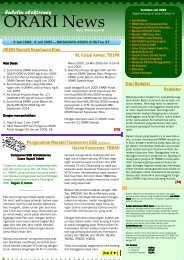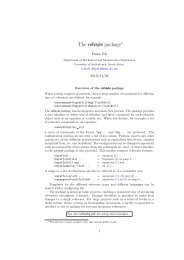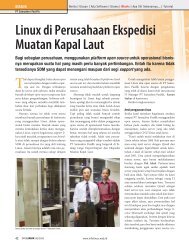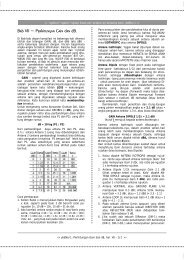Create successful ePaper yourself
Turn your PDF publications into a flip-book with our unique Google optimized e-Paper software.
for a tetrode or pentode is obtained through a dropping resistor<br />
and grid leak bias is used (see Figure 39A). In this system a high<br />
transconductance, low-µ triode is connected between screen and<br />
cathode, and the controlling bias for the small triode is taken from<br />
Figure 39A. Screen voltage control circuit for exciter keying or<br />
protection against loss of excitation when supplying<br />
screen from high voltage source.<br />
the tetrode or pentode bias developed in the grid leak resistor.<br />
When normal excitation is present on the r-f amplifier and grid<br />
bias is developed, the triode control tube is cut off and the screen<br />
voltage circuit operates normally. If excitation voltage is removed<br />
from the tetrode or pentode power amplifier, the bias voltage<br />
developed in the resistor drops to zero and the control triode<br />
becomes conducting. The current drawn by the triode control tube<br />
will increase the voltage drop across the series screen resistor and<br />
lower the screen voltage to a very low value.<br />
There is still some voltage on the tetrode or pentode screen and a<br />
small static anode current flows. Usually this remaining current is<br />
not enough for the anode dissipation rating to be exceeded. This<br />
value can be reduced further by the use of a second control triode<br />
in parallel with the first (this redundancy is also insurance against<br />
failure of the single triode), by putting a gas regulator tube in series<br />
with the lead to the screen before the screen r-f by-pass capacitor,<br />
or by introducing a small amount of fixed bias on the power amplifier<br />
between the grid resistor and the power tube grid.<br />
Figure 39B shows a method of keying a tetrode or pentode r-f<br />
power amplifier where the low voltage power supply for the screen<br />
of the power tube and for the anode and screen of the driver stage<br />
is keyed directly. This permits keying in a relatively low voltage, low<br />
current circuit. The key click filter capacitor, resistor, and choke are<br />
64
















